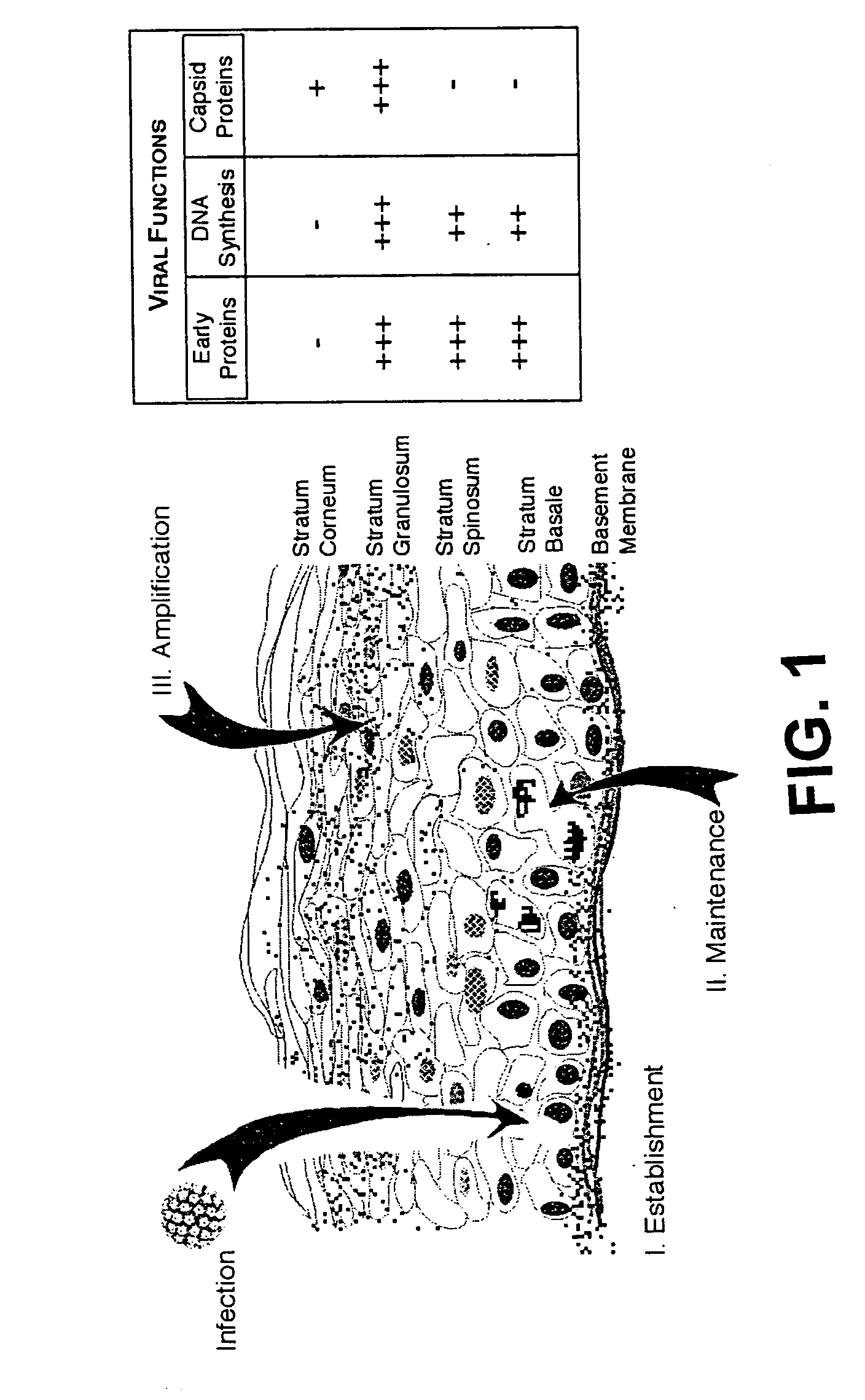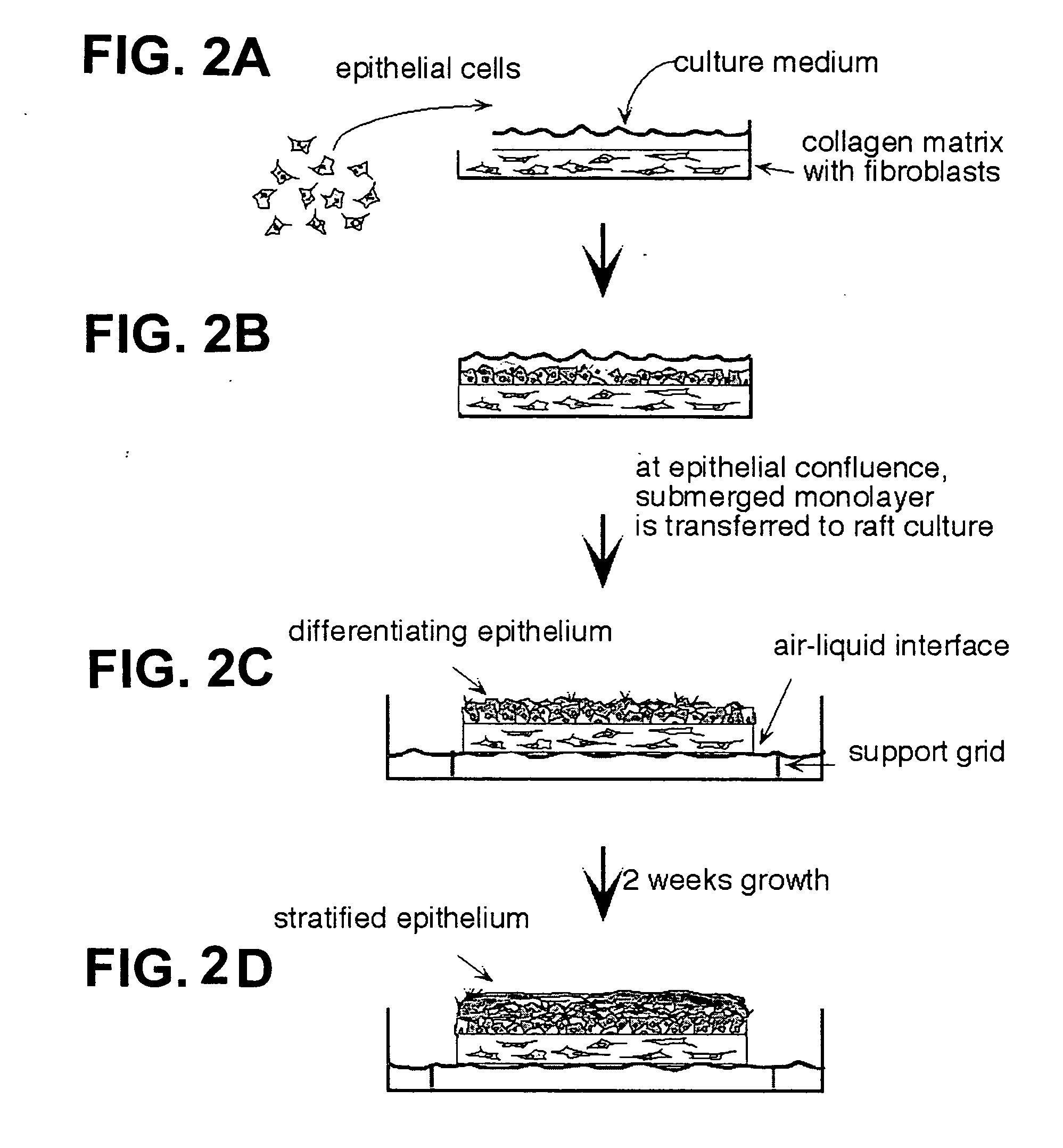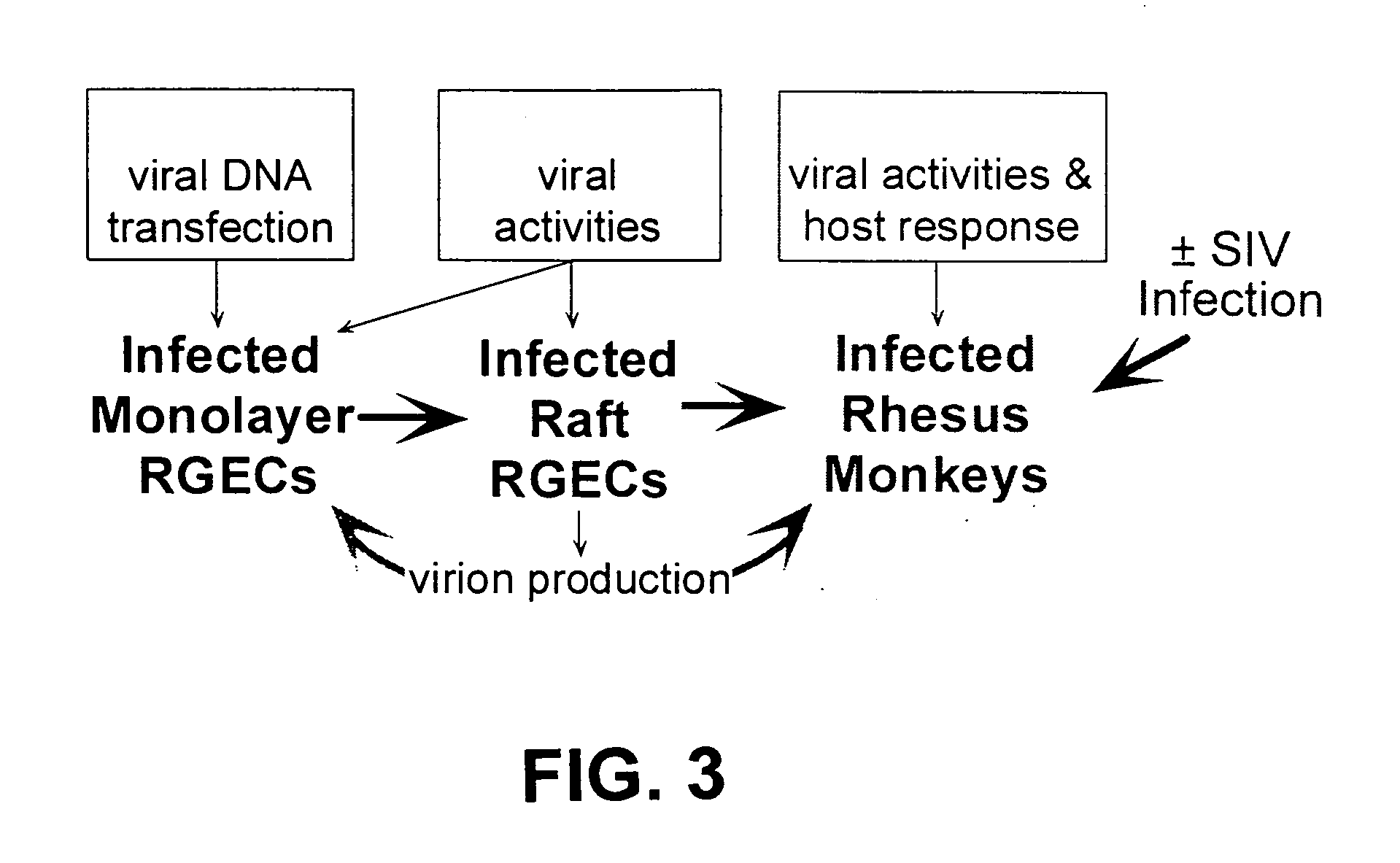RhPV as a model for HPV-induced cancers
a technology of hpv and model, applied in the field of nonhuman primate animal model infection system, can solve the problems of affecting the study of hpv biology, and severely limited ability to obtain the quantity of virions necessary for infectivity studies, so as to and inhibit the production of virus and/or viral infection.
- Summary
- Abstract
- Description
- Claims
- Application Information
AI Technical Summary
Benefits of technology
Problems solved by technology
Method used
Image
Examples
example 1
HPV18 Transfection Into Low Passage Normal HECs
[0044] The biosynthesis of infectious HPV18 was performed by allowing low passage HECs transfected with cloned HPV18 DNA to differentiate in the raft system. Both foreskin and ectocervical cells were tested with similar results. We selected a clonal outgrowth of the transfected HECs, HCK18:1Bj, that contains ≈50 episomal copies of HPV18 per cell. The clonal HCK18:1 Bj cells were grown as raft tissues and viral particles were purified by a series of low and high speed centrifugation steps. Southern blot analysis of HPV18 virus particle preparations indicated the purification of ≈108 HPV18 particles per raft tissue (a total of 1.5 ml at 1.5×109 particles per ml). The infecting dose for PVs is based on the number of vDNA-containing particles. Hereafter, the term “virion” is employed to refer to vDNA-containing PV particles. The HPV18 virus particles were shown to be infectious by incubating subconfluent HEC monolayers with a dose of ≈340 ...
example 2
HPV31 Transfection Into Low Passage Normal and Immortalized HECs
[0045] HPV31 DNA transfection into low passage HECs (stable cell line HK31 a) or the immortalized HEC lines SCC-13 and HaCaT resulted in the production of viral particles. Transfection of high-risk HPV genomes into low passage (mortal) foreskin or cervical HECs results in immortalization of these cells in the presence of stable, episomally replicating viral genomes. The theory is that the HPV genomes express early gene products (probably E6 and E7) that give the cells a growth advantage and extend the life span of the cells. However, co-transfection of a selectable marker (e.g., the hygromycin resistance gene) is necessary to select for stable HPV transfectants when immortalized HEC lines like SCC-13 and HaCaT are used. The HPV-negative SCC-13 cell line is an immortalized line derived from a squamous cell carcinoma of the facial epithelium. Patches of intranuclear HPV31 virus particles were observed by electron microsc...
example 3
RhPV1 Transfection into Low Passage Normal and Immortalized Hecs
[0046] In a preliminary study, the RhPV1 genome was transfected into low passage foreskin HECs and into HaCaT cells; stable selections were not performed. Viral transcription and replication were detected in these cells as assayed by detection of spliced viral transcripts corresponding to both E1*I,E2 and E1{circumflex over ( )}E4 (FIG. 5) and an increased life span of the mortal foreskin HECs. Sequence analyses of RhPV1 cDNAs derived from RT-PCR amplimers revealed spliced E1*I,E2 and E1{circumflex over ( )}E4 transcripts similar to those expressed by high-risk HPV types (e.g., 16 and 31;). These RhPV1 transcript data are the first collected from a non-human primate PV. Furthermore, these results indicate that the cloned RhPV1 genome is competent for replication in HECs and further suggest that RhPV1 will behave in a biologically similar fashion to its related high risk HPV types 16 and 31. Primary Rhesus genital epith...
PUM
| Property | Measurement | Unit |
|---|---|---|
| particle diameter | aaaaa | aaaaa |
| pH | aaaaa | aaaaa |
| pH | aaaaa | aaaaa |
Abstract
Description
Claims
Application Information
 Login to View More
Login to View More - R&D
- Intellectual Property
- Life Sciences
- Materials
- Tech Scout
- Unparalleled Data Quality
- Higher Quality Content
- 60% Fewer Hallucinations
Browse by: Latest US Patents, China's latest patents, Technical Efficacy Thesaurus, Application Domain, Technology Topic, Popular Technical Reports.
© 2025 PatSnap. All rights reserved.Legal|Privacy policy|Modern Slavery Act Transparency Statement|Sitemap|About US| Contact US: help@patsnap.com



